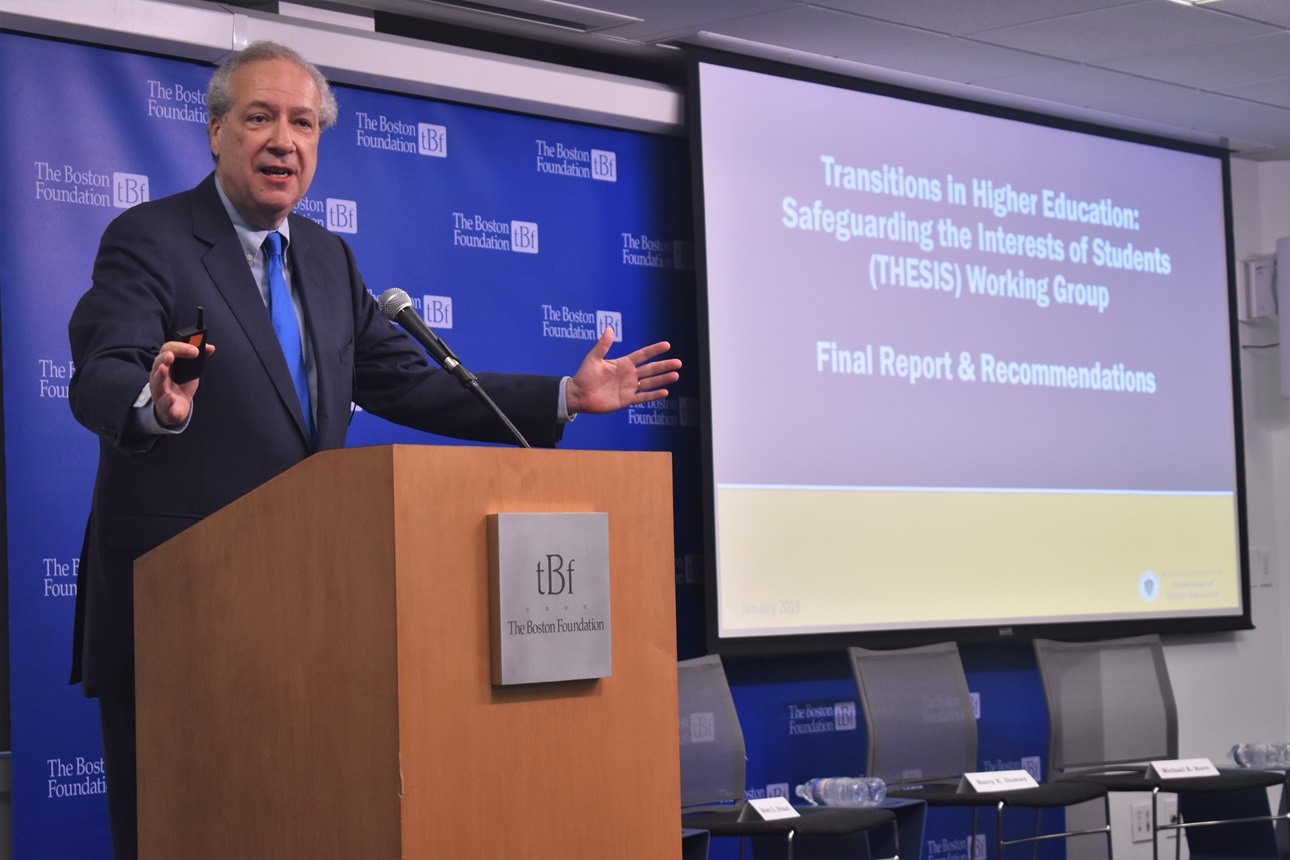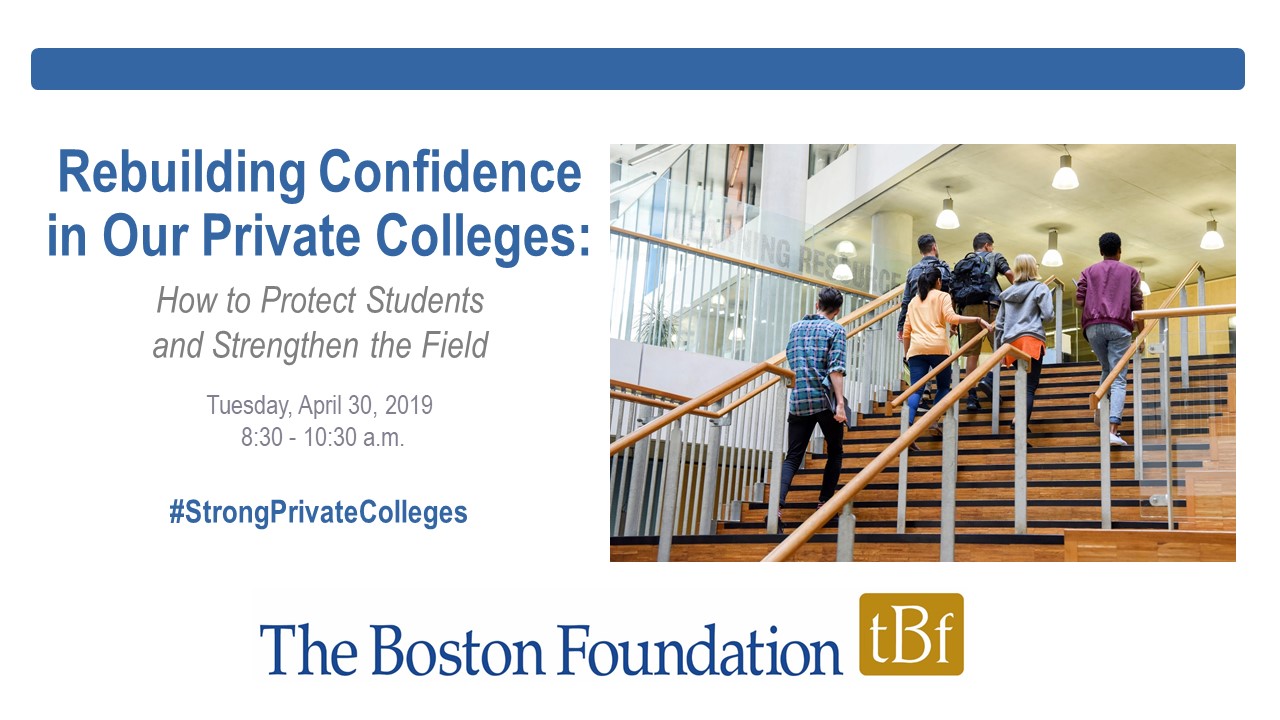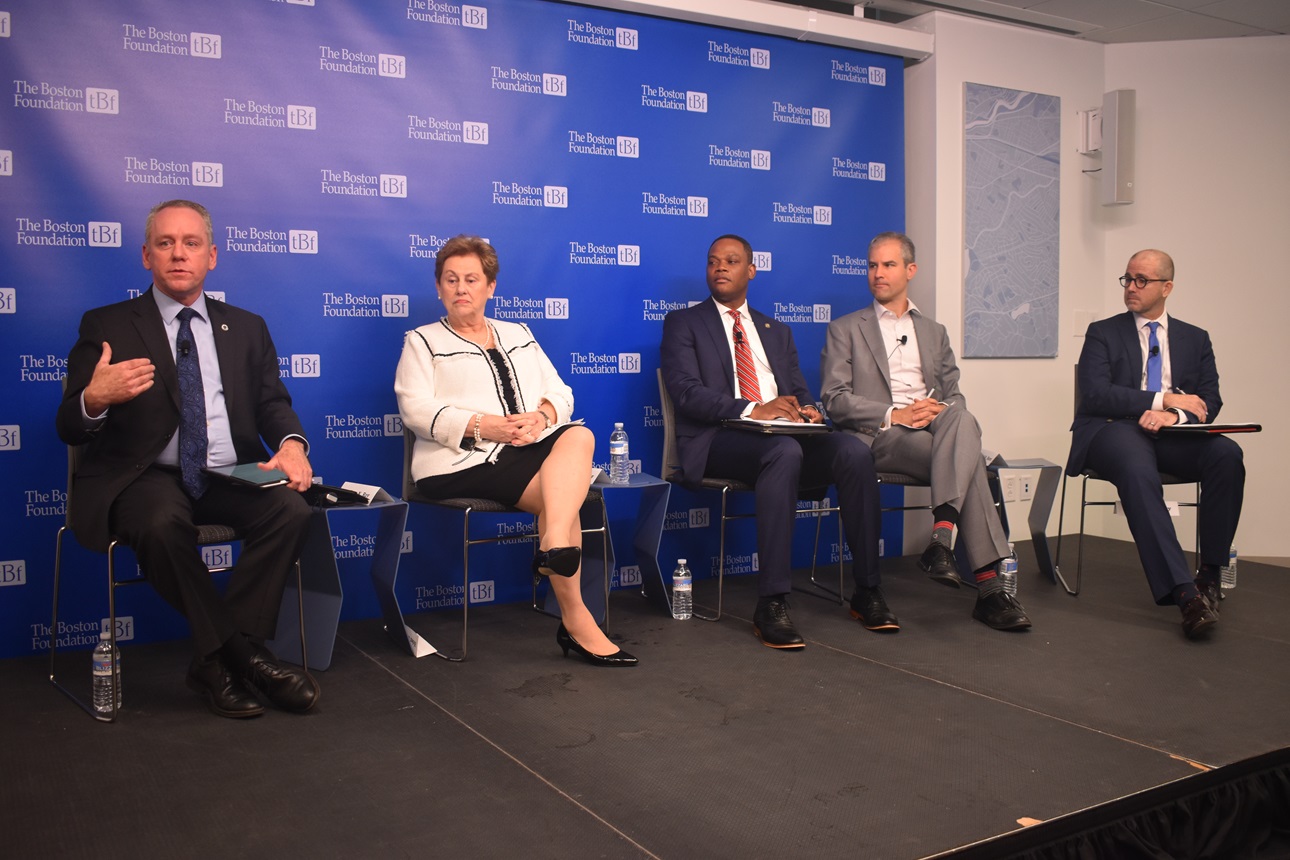Rebuilding confidence, and ensuring the best outcomes for small private colleges and students
In the wake of college closures and mergers, a panel discussion looks at the best ways to support small colleges and protect their students.
April 30, 2019
It has been almost a year since the abrupt closing of Mount Ida College sent a shock wave through the school’s students, parents and everyone who has a stake in higher education in Massachusetts. The news sparked an ongoing a conversation about the financial health and wellbeing of all Massachusetts private colleges. Much of the conversation played out in the pages of the Boston Globe, but a Working Group formed by the Massachusetts Board of Higher Education quietly set out to research and write a report with the goal of addressing the challenges facing private colleges and their students.
On April 30, the Boston Foundation hosted a forum that featured the findings of that Working Group, which were presented by Chris Gabrieli, Chair of the Massachusetts Board of Higher Education, and Carlos Santiago, Commissioner of the Massachusetts Department of Higher Education. “I am a dyed in the wool fan of Massachusetts higher education,” said Gabrieli in opening remarks (with slides here), “but deep forces of change are roiling through and challenging higher education here and nationally.” Among the changes are declining enrollments that are likely to continue and disproportionately affect small schools. According to Gabrieli, one-third of these institutions are in danger of closing.
He went on to summarize the Working Group’s primary recommendation, which is to allow private colleges to steer their own course until they are determined to be in financial danger—a condition that would be determined by an annual review of their budgets—and then, if necessary, intervene.
Commissioner Santiago spoke next, pointing out that over the past five years, there have been 18 closures or mergers of private higher education institutions in Massachusetts. “Until Mount Ida’s sudden closure, our approach had been reactive,” he said. “In the case of Mount Ida, it was too late for us to do anything to help. We need to be proactive going forward and take action earlier to protect students and other stakeholders.”
Currently, it is up to the private institutions to notify the Board of Higher Education (BHE) that it may close or plans to merge. Under the Working Group’s recommendations, the BHE would monitor these institutions annually and step in if warning signs suggest they are in trouble. At that point, the BHE would work on a contingency plan to preserve student records and provide feedback on communications to students and stakeholders through what Santiago described as a “balanced approach to consumer protection.” (View his slides here.)
The new regulations guiding this process will be drafted in May and June and voted on in the fall meeting of the BHE. “Our goal,” said Santiago, is to ensure that institutions make it through difficult times and protect students.”
Following the presentation, Keith Mahoney, Vice President of Communications and Public Affairs Communications at the Boston Foundation, moderated a panel of experts in the field. Rep. Jeffrey N. Roy, who chairs the Joint Committee on Higher Education, said that he sees higher education as an equality issue. “We know that with a Bachelor’s degree, you’re going to do better over the course of your life,” he said, pointing out that at one time in America it was determined that high school should be free and suggesting that perhaps such an option should be considered on the college level. He added that higher education is “high on the list of concerns in the legislature, including the rising crisis of student debt.”
Helen Drinan, President of Simmons University, made the point that Simmons was very fragile when she began her leadership. It was online learning that turned the situation around. “We had to find a way to grow nationally and reach students in remote parts of the country where there is no place to go,” she explained. Since expanding their program, online learning has become the college’s single largest revenue source—going from $5 million to $80 million.
Drinan and another panelist, Harry E. Dumay, President of Our Lady of the Elms College, both have MBAs, which may explain their practical approach to leading their respective schools. “Innovation and adaptation are so important,” said Dumay, adding that private colleges have to consider the growing population of nontraditional students, such as working adults returning to school, who need flexible schedules.”
Mahoney called the final speaker, Michael B. Horn, the “disruptor” on the panel. He is the co-founder of the Clayton Christensen Institute for Disruptive Innovation and the author of a number of books on college education. Bringing a national perspective, Horn said that private colleges everywhere are in peril, but the biggest “demographic cliffs” are in the Northeast and the Midwest, where the college-age population is decreasing markedly. “The nature of our workforce is changing, with technology skills cited in job postings more than anything else,” he concluded. “That means that the future of education has to change as well. I think a liberal arts education is important, but it’s not enough. We have to create a much more flexible education system. Standing pat is not an option.”



